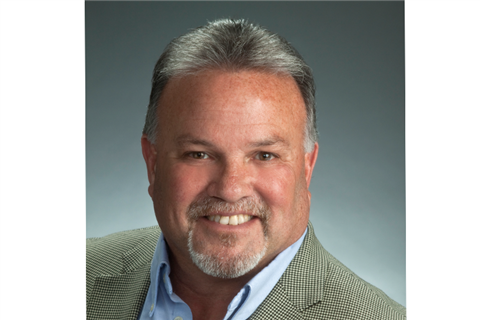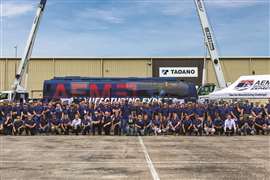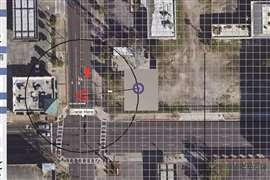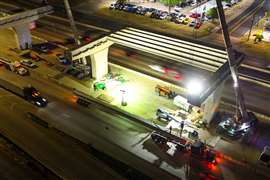How to navigate “nuclear verdicts”
11 May 2022
Bill Smith discusses a case of litigation gone wrong and the legislative change that is needed in many plantiff-friendly states.
By now, we’ve all heard about “nuclear verdicts” and the damage they do to the companies in our industry. Unfortunately, it does not look like it is getting any better. We are heading into a legally charged battle every time we take a case worth defending to trial. Over the years, I have heard many of our policyholders say that all insurance companies do is take money and settle claims instead of fighting and going to trial. They often wonder why insurance companies settle claims instead of fighting in court. And they wonder why insurance costs continue to rise.
 Insurance companies are heading into a legally charged battle every time they take a case worth defending to trial. Image: Adobe Stock
Insurance companies are heading into a legally charged battle every time they take a case worth defending to trial. Image: Adobe Stock
Well, the fact is, until we all rise and fight together for the crane and rigging industry, for our industry, and until we all work hard collectively to change the legislative landscape, we are going to continue to be attacked and constantly pay more. That applies to all of us. The ability to defend your business is getting weaker with each passing claim, especially in some states due to their broad and plaintiff friendly legislation. It is increasingly becoming a greater risk to insure the crane and rigging industry. When you add in the particularly liberal jurisdiction decisions, many insurance companies are going to be making tough decisions and drawing certain boundary lines.
The most recent and egregious case occurred this year in the state of Washington. Several years ago, there was an accident involving a tower crane. The tower crane company settled outside of trial with what they thought was a responsible position on their part. However, the plaintiff lawyers wanted every company on the site to give up all insurance policy limits regardless of the involvement or the facts that led to the accident.
NBIS believes in the philosophy that if an insured company did something wrong that led to an injury, or worse, a fatality, then insurance should pay for that mistake. Conversely, if an insured company was on a job and did not cause an accident, the insured company should be defended based on the facts, even if it means going to trial. In this Pacific Northwest venue, there was a verdict delivered against a second crane company at the same location of the accident. That crane company did not have an accident and did nothing to cause the tower crane accident. This company was caught up in a web of untruths, manipulated legal tactics and poorly written litigation.
Beyond unjust
At this time, I cannot dive into the particulars of the companies involved and the granular facts of the case, but I will talk about the litigation and the legislation that worked to allow this unjust – and in my opinion immoral – decision of the court. If you do business in a state where “joint and several” legislation exits, you need to educate yourself on the law or you may be the next company to fall victim to abusive tactics of unfair settlements.
What is “joint and several” legislation? States have mainly followed one of three approaches when dealing with multiple parties responsible for causing an injury or damage: (1) joint liability, (2) several liability, or (3) joint and several liability. Joint action are two or more individuals who either (1) act in concert to commit a tort (accident and/or injury), (2) act independently but cause a single liability injury, or (3) share responsibility for an accident/injury because of vicarious liability.
If two or more parties have “joint liability,” they are each liable up to the full amount of the obligation. Only one action can be brought and if only one company/person is sued, no further recovery can be had from the others. If two or more parties have “several liability,” each company/person is liable only for their respective obligations based on their percentage of fault. If, however, two or more parties have “joint and several liability,” any of the defendants can be pursued as if they were jointly liable and it becomes the responsibility of the defendants to figure out their respective proportions of liability and payment. The plaintiff has the option of proceeding against just one jointly and severally liable defendant to recover 100 percent of his damages.
Today, joint and several liability comes in three general forms, with minor variations from state to state:
Pure Joint and Several Liability: Places the risk of insolvency and the burden of identifying non-party tortfeasors on the defendants. Each defendant is responsible for the entire amount of damages regardless of the amount of responsibility. Seven states practice pure joint and several liability (Alabama, Delaware, Maryland, Massachusetts, North Carolina, Rhode Island and Virginia).
Modified Joint and Several Liability: A cross between Pure Joint and Several Liability and Pure Several Liability. Splits the risk of insolvency between the plaintiff and the solvent defendants. A defendant is responsible for the entire verdict only if they are found to be at or above a specified percentage of fault. Twenty-nine (29) states practice Modified Joint and Several Liability (California, Colorado, Hawaii, Idaho, Illinois, Iowa, Louisiana, Maine, Minnesota, Mississippi, Missouri, Montana, Nebraska, Nevada, New Hampshire, New Jersey, New Mexico, New York, North Dakota, Ohio, Oklahoma, Oregon, Pennsylvania, South Carolina, South Dakota, Texas, Washington, West Virginia and Wisconsin).
Pure Several Liability: Places the risk of insolvency and burden of identifying non-party tortfeasors on the plaintiff. Each Defendant is only liable for their assigned portion of damages based on their percentage of responsibility. Fourteen states practice Pure Several Liability (Alaska, Arizona, Arkansas, Connecticut, Florida, Georgia, Indiana, Kansas, Kentucky, Michigan, Tennessee, Utah, Vermont and Wyoming).
Each state has its own percent of liability from 1 percent to 100 percent to determine who pays and what amount.
Severally liable
The original theory of the legislation would make sense where people that were injured and were fault-free claimants. But Washington state law provides that all parties found to be at-fault will be jointly and severally liable for the total of the fault-free claimant’s damages. This allows a fault-free claimant to collect the total damages from any at-fault defendant, no matter how minor his responsibility. In this scenario, it could be held that if you are 1 percent at fault you could be held to pay up to 100 percent of the damage award.
In Washington, modified joint and several liability, liability is several, but joint and several liability applies if the defendants acted in concert, or if a person acted as an agent or servant of the party.
In this case, the company that hired the second crane company to help them dismantle the tower crane put up all their insurance limits but plaintiff counsel needed them in the case to fulfill the “acted in concert and agent or servant of the party” clause. The plaintiff was allowed to leave all others that gave their insurance limits out of the trial and bring only the company that rented the crane. This company also gave up their insurance limits but the plaintiff lawyers had to create the need to fit the legislation.
On the opposite side of the spectrum let’s look at Texas with their Modified Joint and Several.
In Texas legislation, joint and several liability exist for defendants more than 50 percent at fault, or defendants who act intentionally. Under their modified joint and several liability, if a defendant’s percentage of the damages is 50 percent or less of the total liability, the defendant is only responsible for his percentage of responsibility. A defendant is jointly and severally liable, however, if: a) that defendant’s percentage of responsibility is greater than 50 percent, or b) the defendant, with specific intent to do harm to others, acted in concert with another person to commit certain specified, intentional torts, including murder, sexual assault, fraud or other felonies of the third degree or higher.
Tort reform action
Each state must be evaluated, and tort reform must be considered in states that allow plaintiff attorneys to manipulate the facts to fit the legislation. If this continues it will force your company, and insurance carriers, into a position where they can’t defend your noninvolvement of an incident. A statewide group effort will be needed to make a change if you are going to conduct business and defend your business when you did nothing wrong.
You can see that each state has a wide range of legislation to define liability in tort actions. When considering the states you work in, you must look into the state’s legislative “Joint and Several” laws and decide to live with them or work together to make them less intrusive to your business. If you don’t change the atmosphere and legislative climate your insurance company will have very little choice but to pay your insurance limits each time you are involved in a claim, especially in jurisdictions that have broad reaching legislation.

Bill Smith executive vice president, NBIS, is an expert on risk management and safe crane operations. He was a member of C-DAC, which assisted writing the OSHA Crane & Derricks Standard.
STAY CONNECTED


Receive the information you need when you need it through our world-leading magazines, newsletters and daily briefings.
CONNECT WITH THE TEAM











